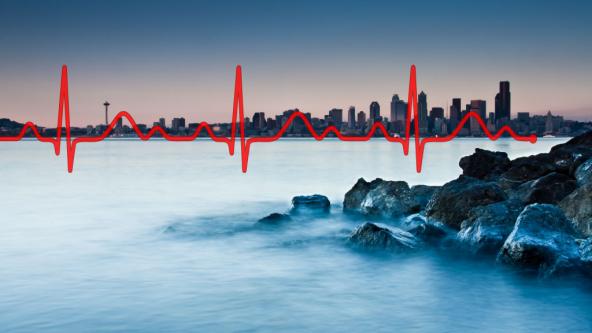A series of reports from the Puget Sound Institute will synthesize key findings from close to 100 projects funded over the past five years by the Environmental Protection Agency.
Six years ago, the EPA authorized more than $20 million dollars for projects to protect, restore and study critical habitats like beaches and floodplains in Puget Sound. The result is what PSI research scientist Aimee Kinney describes as a treasure trove of new information that will help guide future Puget Sound recovery efforts.
“These are the big ideas of the last five years,” says Kinney who will pull together what the grant recipients found and what they want to share with managers and decision makers. Kinney’s work will continue for two years and will examine the outcomes of 97 different projects on topics ranging from zooplankton to shoreline armoring.

The funded projects were part of a 2015 initiative driven by what state and federal agencies have termed Implementation Strategies. The strategies identify areas of focus for funding in Puget Sound and provide a detailed roadmap for future research and planning.
Kinney’s work is supported by the Washington State Departments of Fish and Wildlife, Natural Resources, and Commerce, which teamed up to distribute the grants on behalf of the EPA’s National Estuary Program. That money was distributed over a five-year period from 2016 – 2020. Now, in 2022, most of the projects have been completed and managers are hoping to apply what they learned. “This is a good time to look back on what worked well and how we can move it forward,” Kinney says. “This gives us a chance to see how the research connects.”
Kinney describes the synthesis work as daunting in scale “but incredibly interesting because the projects are all so different and creative.” The work largely focuses on Puget Sound habitats and runs the gamut from beach restoration to scientific research.
One major project highlighted in the study includes the continued development of a Puget Sound-wide zooplankton monitoring program. Zooplankton, tiny creatures at the base of the food web, are critical to the survival of salmon and most species living in Puget Sound. Other projects include public outreach such as the Shore Friendly program which educates shoreline homeowners about alternatives to environmentally damaging shoreline armoring. A full list of projects is available here.
Once Kinney and her team have completed their overviews, the Puget Sound Institute will report the results to a wide audience of stakeholders and policymakers. The study will also include analyses and recommendations for funders and future research.

“We’ll look at who needs to know about these findings and then figure out the most effective ways to reach them,” Kinney says. “You shouldn’t just get a report from a project and put it on a shelf and be done with it. You need to connect it to other research to learn from it.”
Reports from the study will be ongoing throughout 2022 and 2023 and will conclude in early 2024. When completed, the syntheses will cover topics related to Implementation Strategies for shoreline armoring, floodplains and estuaries, land development and cover, Chinook salmon, and oil spills. The project is sponsored by the EPA-funded Habitat Strategic Initiative.
